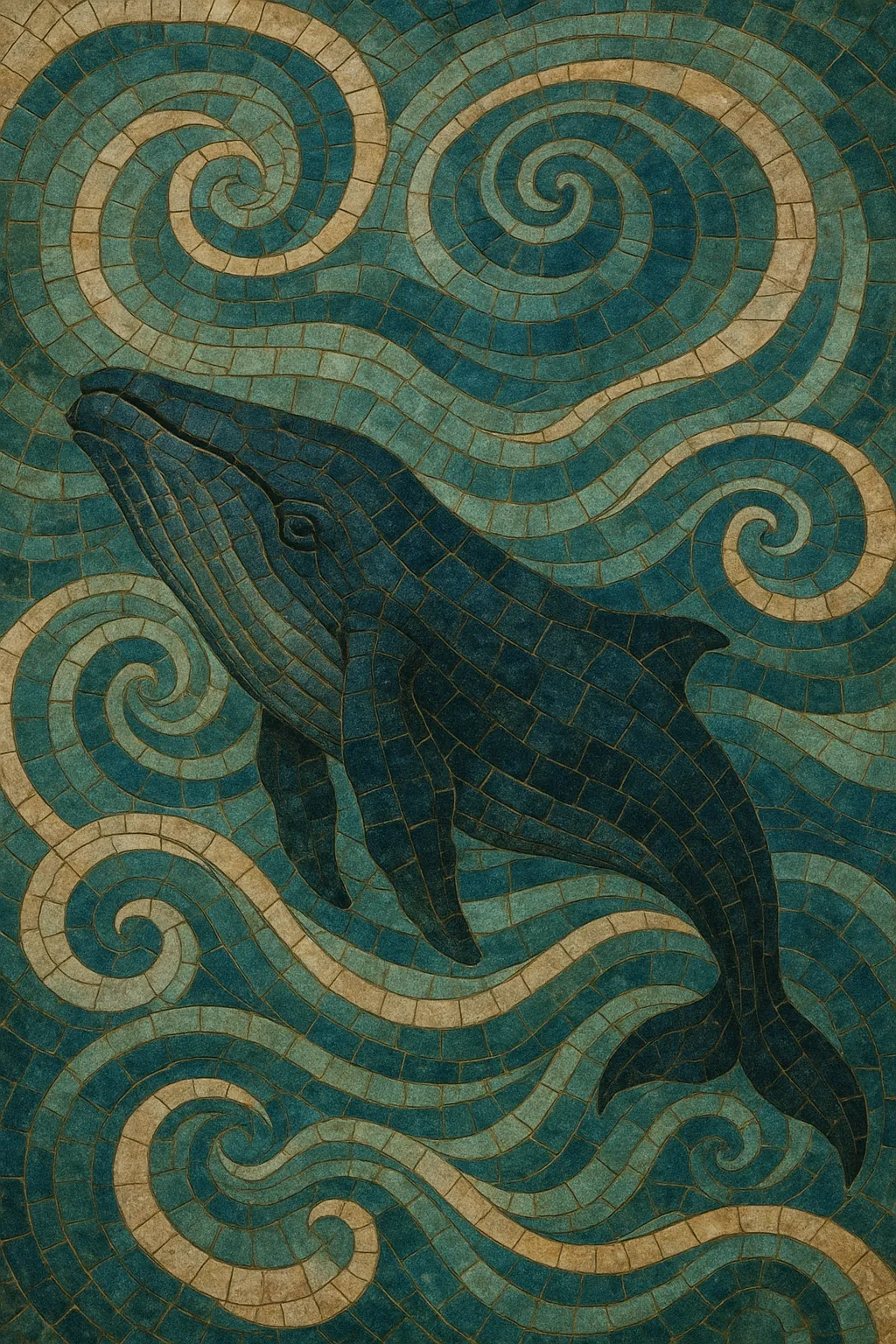
Whale song is a body of bioacoustic recordings featuring the vocalizations of whales—most famously humpback whales—presented and listened to as music. Although whales have sung for millennia, the genre coalesced in the late 1960s and 1970s when high‑fidelity hydrophone recordings became widely published on albums and in documentaries.
The sound world is characterized by slowly evolving phrases, haunting glissandi, pulsed rhythms, and a striking dynamic and spectral range, from infrasonic rumbles to piercing squeals. Humpback whale songs exhibit hierarchical structure (units → phrases → themes → songs), seasonal variation, and cultural transmission across populations, which listeners perceive as forms of motif development and long‑form composition.
As a listening genre, whale song straddles music, science, and environmental sound art. It is used for contemplation and relaxation, has influenced ambient and new age aesthetics, and remains a touchstone for eco‑acoustic awareness.
Underwater microphones (hydrophones) deployed by researchers and naval listening posts captured the first widely shared recordings of whale vocalizations in the 1950s–60s. In the late 1960s, oceanographer Roger Payne, engineer Frank Watlington, and colleagues documented the complex, repeating structures of humpback whale songs and recognized their musical salience.
In 1970, the LP “Songs of the Humpback Whale” (produced by Roger Payne) became a best‑selling nature recording, introducing global audiences to whale song as a form of music. National Geographic’s 1979 magazine flexi‑disc further amplified public exposure. These releases coincided with—and energized—the modern environmental movement, contributing to policy milestones such as the U.S. Marine Mammal Protection Act (1972) and the 1986 IWC commercial whaling moratorium.
Composers and musicians began to integrate whale song into their work. Notable examples include George Crumb’s Vox Balaenae (1971) and Paul Winter’s collaborations with Roger Payne on recordings and concerts that wove whale voices with human instruments.
Bioacoustic research in this period revealed that humpback songs are culturally transmitted and evolve year‑to‑year, often spreading “memes” across ocean basins. Studies explored frequency ranges (roughly 20 Hz to 10 kHz depending on species), seasonal cycles, and social functions (e.g., mating displays), deepening both scientific and musical appreciation of the material.
Advances in portable hydrophones and digital recorders broadened access for field recordists and sound artists. Contemporary eco‑acoustic projects, ambient releases, and sound installations use whale song to evoke planetary scale, nonhuman agency, and the acoustic richness of the ocean. Meanwhile, bioacoustics continues to benefit from public interest nurtured by these recordings, informing conservation and ocean policy.
Identify target species and seasons (e.g., humpbacks during breeding). Secure permits where required and follow marine‑wildlife approach guidelines. Prioritize non‑intrusive practices—no playback to animals unless approved by ethics protocols.
Use quality hydrophones with low self‑noise and extended low‑frequency response, paired with 24‑bit/96 kHz recorders. Deploy from a quiet vessel or drifting platform; isolate the cable to minimize handling noise. Record long continuous takes to capture phrase cycles and song evolution.
Present unedited performances to honor the integrity of the song, or curate excerpts highlighting distinct themes. If blending with instruments (e.g., piano, strings, winds), favor sparse textures, slow tempos, and sustained harmonies that leave room for whale phrases. Avoid masking key bands (often 100 Hz–5 kHz for humpbacks) and keep dynamics wide to preserve ocean ambience.
Apply conservative noise reduction (ship hum, handling noise) and gentle EQ (e.g., low‑shelf cleanup, narrow cuts for tonal hums). Time‑stretch only if clearly disclosed, as it alters biological meaning. Use multiband compression lightly to maintain natural envelope. Consider binaural or immersive formats to convey underwater space.
Provide liner notes with recording dates, locations, species, and recording chain. Credit scientists and local communities. Encourage mindful listening and communicate conservation messages tied to the soundscape.

